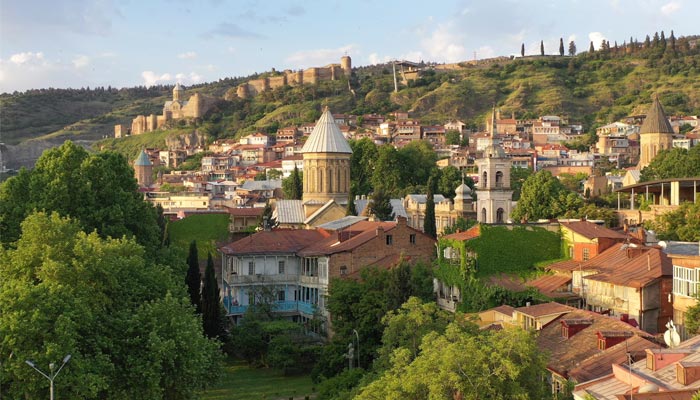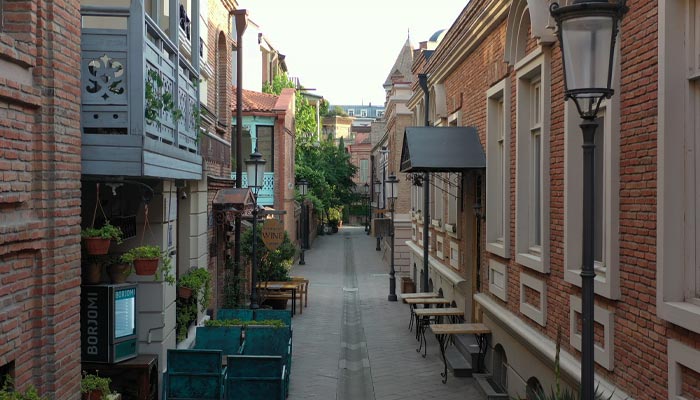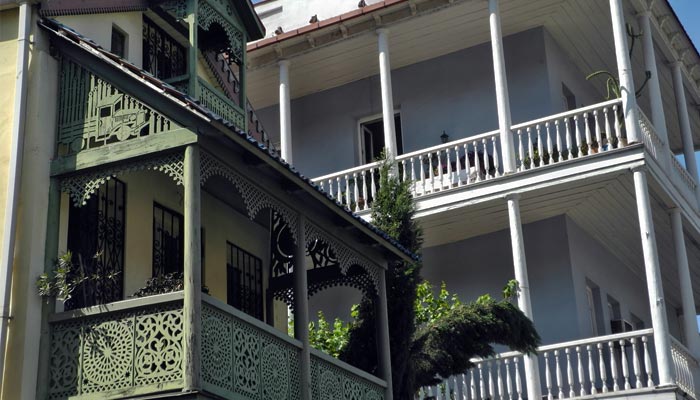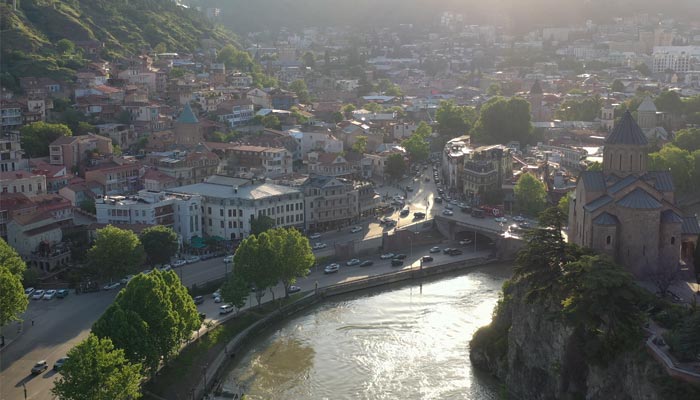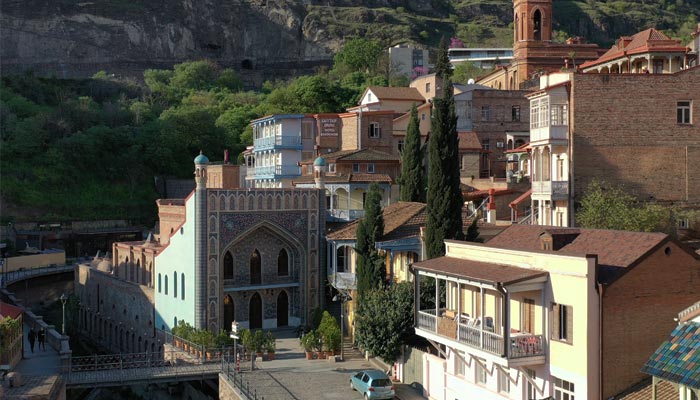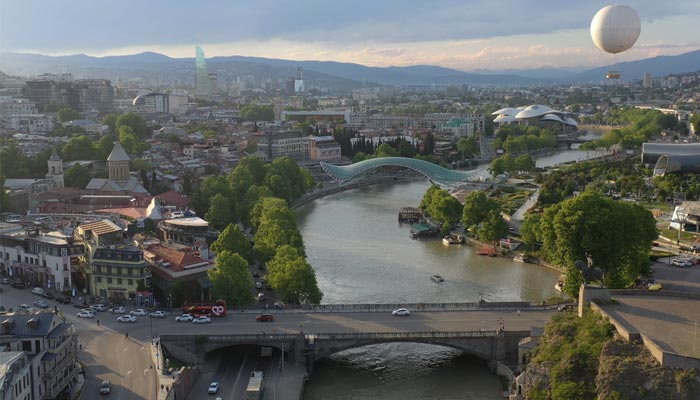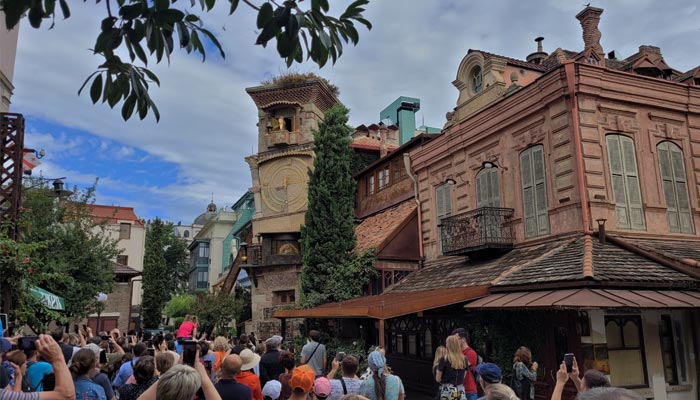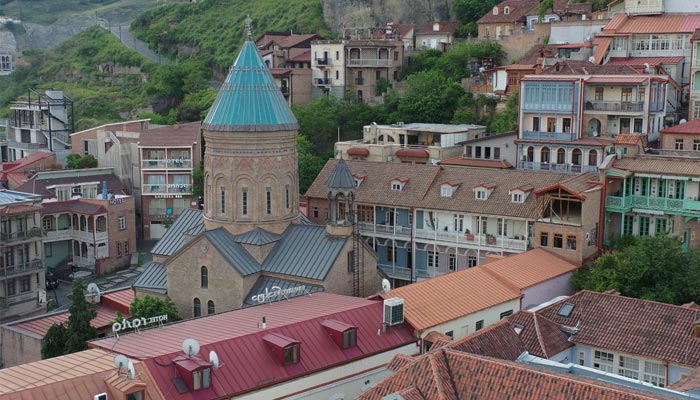|
Tbilisi Tbilisi is the capital and largest city of Georgia. But what makes Tbilisi special is not its size or its status as the capital, but its architecture from different eras, its location on the river between the mountains, its ethnic and religious diversity, and its old town with two- and three-storey houses, wood-carved balconies and various religious buildings. Tbilisi is a city where everyone feels comfortable, regardless of age, nationality or religion. It is a city where everyone can recognise something of their own country and discover many new things. Tbilisi is Asia, Europe and the wild Caucasus. Old churches with beautiful frescoes, synagogues and mosques, even Zoroastrian temples, all side by side, with restaurants and nightclubs nearby, this and much more makes Tbilisi a very unique city. The freedom, serenity and relaxed atmosphere that can be felt here at first glance are often cited as reasons for visiting Tbilisi. General Information Population: 1.8 million The name, more complicated than you might think The basis for the name of today's Tbilisi is the Georgian word "Tbili", which means "warm". It was only when the capital was founded in the 5th century that the Georgian word for "warm" became "Tphili" and the city was named "Tphilisi". When Tphilisi was changed to Tbilisi is disputed, because even on the maps of Jean Chardin, who also visited the capital of Georgia in the 17th century, the capital of Georgia is called Tbilisi, on some of his maps even Teflis. In any case, when Georgia became part of the Russian Empire in the 19th century, Tbilisi was relatively common, and to avoid complicating matters, the Empire officially named the capital of Georgia Tbilisi, but in Georgian the name "Thpilisi" was still used. In 1936, with the agreement of Georgian linguists, the official name of the capital of Georgia was changed from Thpilisi to Tbilisi, and so it was used throughout the Russian-speaking world, including the GDR, but outside this area, even in West Germany, the name Tbilisi continued to be used. So, what is the correct name today, Tiflis, Tbilisi or Tbilissi? Internationally, the spelling Tbilissi is correct, but in German-speaking countries the spelling Tbilissi is used to avoid stress and pronunciation errors, although the 19th-century name Tbilisi is still in common use in German-speaking countries. Legend about foundation of Tbilisi According to legend, Vakhtang, King of Eastern Georgia, hunted with his falcons in the area around Tbilisi, which was then forested. The well-trained falcon flew to strike its prey, a pheasant, but after a while the king lost sight of his favourite animal. Searching for it, he came across a warm spring of water where both the falcon and its prey, the pheasant, lay exhausted. When Vakhtang learned that there were many such warm springs in the valley, he ordered a city to be founded here and named it Tbilisi, which means 'place of warm springs'. History of Tbilisi The area of present-day Tbilisi was inhabited as early as the Bronze Age, but the first written mention of the city dates back to the 4th century AD, when the Persians built the fortress of Narikala, where they appointed a Persian governor with the title of "Pitiachsh" and made parts of eastern Georgia subject to tribute. In the 5th century, the East Georgian king Vakhtang Gorgasali managed to free Tbilisi from Persian rule and decided to move the capital of the kingdom from Mtskheta to Tbilisi, but a few years after his decision, Vakhtang died in a battle not far from Tbilisi and his wish to make Tbilisi the royal seat was fulfilled by his son Dachi at the beginning of the 6th century. The interest in Tbilisi, due to its central location at the crossroads of several economic routes, was very great and it took a lot of strength and life for the inhabitants to hold the city for a good two hundred years, but in the 8th century Tbilisi fell into Arab hands and in 736 the Caliphate of Tbilisi was established. The Caliphate was ruled not only by Arabs but also by local Georgians, but it existed alongside several Georgian kingdoms as a largely independent principality, often refusing to pay tribute to the Arab Caliph. From the end of the 10th century, after the unification of Georgia by the Bagrationi royal dynasty, several kings tried to incorporate Tbilisi into the kingdom, but only King David IV succeeded in 1122. King David, known in history as David the Builder, granted many privileges to Tbilisi's ethnically diverse inhabitants, especially the Muslims, so that they could continue to practice their crafts and trades without restriction. Tbilisi's reputation as a symbol of tolerance also dates from this period. King David also moved the capital from Kutaisi to the east, making Tbilisi the capital of the United Kingdom of Georgia in 1122. Peaceful life in Tbilisi continued for a good 100 years. In 1226, the Shah of Khorezmia (now part of Uzbekistan), Jalal ad-Din, invaded and took the city after several days of fighting, then sacked Tbilisi and carried out a violent massacre. At the time, Georgia was the richest state in the Middle East, and by taking Tbilisi, its provinces and rich booty, Jalal ad-Din hoped to finance his fight against the Mongols, which he succeeded in doing. They managed to liberate Tbilisi from the Khorezmians, but the Mongols soon invaded. The battle against the Mongols lasted several decades, and when Tbilisi was liberated and beginning to get back on its feet, the Asian conqueror Timur Leng invaded and devastated the city several times. Tbilisi continued this way for several centuries, being conquered, liberated, rebuilt and started all over again. The last battle in Tbilisi took place in 1795 between Georgians and Persians, after which the capital looked like a huge ruin. Soon after, in 1801, the Russian army invaded Tbilisi as "liberators" and Georgia and its capital were incorporated into the Russian Empire. Tbilisi under the Tsars In the mid-19th century, the seat of the Russian viceroy was moved to what was then known as Tbilisi, and entire districts were built in the neoclassical style. Theatres, opera houses and luxury hotels were built. By the beginning of the 20th century, the city boasted numerous Art Nouveau buildings by various German and Italian architects, and Tbilisi was nicknamed the "Paris of the East". The population grew from just under 20,000 to over 100,000 by the end of the 19th century. In 1918, after Georgia's independence, a great dream of the Georgians was fulfilled when the first state university was opened in Tbilisi, which still functions today. Soon after, Tbilisi became the capital of Transcaucasia. (Georgia, Armenia, Azerbaijan) Tbilisi during the Soviet era During the Soviet regime, many architectural projects were carried out in Tbilisi. The river was straightened and dammed. Parts of the old city centre were demolished and avenues were built along the river. The many factories in the city also needed many people, and many buildings were built, first in the style of socialist classicism, then in functionalist and highly industrialised architecture, and the peak of Soviet architecture were the so-called prefabricated buildings, which dominate Tbilisi today. The city's population exceeded one million in the 20th century. What to see in Tbilisi Tbilisi has an incredible number of historical, cultural and even some scenic highlights. Once in Georgia, people often make the mistake of not taking the time to see the capital, but only after a classic city tour do they realise that there is so much more to discover in Tbilisi. After all, the city has been the capital of Georgia for a good 1500 years, so it has a lot to tell visitors. If you only have a day or two in Tbilisi, be sure to see the Old Town, from the Baths to the Puppet Theatre. With the associated sights: Metekhi Church, Synagogue, Underground Bakery, Sioni Cathedral, Antshiskhati Church, Peace Bridge, etc. You can also take the cable car, especially in the evening, or walk up to the Narikala Fortress for views of the city and a short walk to the statue of 'Mother Georgia'. Rustaveli Boulevard, with Freedom Square, the Opera House, Rustaveli Theatre and many interesting monuments from the end of the 19th century, is also one of the highlights of Tbilisi. If you want to get to know the capital's scenic diversity better, make a short detour beyond the bathing district to Leghviskhevy and, if you have time, take the funicular up to the Holy Mountain of Mtazminda for a walk in the amusement park, from where you can see the whole city and its surroundings. Tbilisoba The Tbilisoba Folk Festival was first held in 1979 and has been held every year since, at the end of October. It celebrates the founding of the city and includes music, dance and sports events. Farmers from different regions of Georgia also come to the festival, set up their own stalls and offer home-made local products for sale, which can be prepared and tasted on the spot. Tbilisoba Folk Festival lasts two days in total. Public transport in Tbilisi There are three types of public transport in Tbilisi: buses, minibuses (marshutka) and the underground (metro). A trip by bus or metro costs 1 GEL (about 40 cents). Payment on public transport requires an RFID card, which is available at every metro station. There are also many private taxis in Tbilisi, which are considerably more expensive than public transport, but still very cheap by European standards. A trip within the city will cost between 5 and 20 GEL, depending on the distance, and the price should be negotiated individually, if possible before the trip. On following trip, you will visit Tbilisi |

